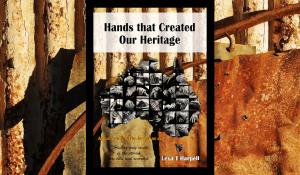Sale on canvas prints! Use code ABCXYZ at checkout for a special discount!

The Outback screams Australia!
……….The landscapes are outstandingly dramatic and awe inspiring. It’s an iconic part of our country’s identity. The Outback is highly impressionable to the world and usually the first vision people have when they hear the word Australia. The vivid red soil which is synonymous with the Outback is due to the high oxide content and one of the most nutrient deficient soils. Every Australian needs to visit the Outback some point in their life to truly understand this country’s essence. It’s more than you will ever expect.
Naturally, my high excitement rose to experience my first taste of the Outback in North West Queensland. Nothing can prepare you to comprehend the vastness and spirit of the Australian Outback. It is recognised as one of the largest, intact, natural areas on earth.
You know when you have arrived in the Outback, you begin to feel alone, although not lonely. The towns grow less frequent, as do the vehicles and people. The silence is deafening. The enormous vibrant blue sky slaps you in the face demanding to be noticed. The boundless night sky begins to illuminate in utter brilliance and you futilely count the stars until your mind ceases to conceive infinite space. You feel yourself shrink, almost insignificant in the world, space and time. You begin to sense there is more to life than merely existing.
Everything ‘out there’ is measured with a line of zeros behind irrelevant numbers – apart from rainfall. In some areas, a five year old child may never have seen water fall from the sky. To survive, iconic windmill blades slowly turn drawing bore water from underground aquifers to sustain life to all living creatures.
The Outback is where someone gives you directions and points, ‘that’s just up the road’ – 300 kilometres away. Where you can drive for a day and still be nowhere. Colossal rock formations majestically rise out of the earth. Where the world’s largest cattle station sits, covering a whopping 24,000 square kilometres and you share the land with unfenced cattle stations. Where gigantic walls of red dust roll across the plains engulfing everything in its path and summer temperatures soar well above 40 degrees with no hint of a breeze or shade in sight. It’s where the doctor and mail may arrive by an aeroplane and where your nearest neighbour could be 500 kilometres away.
Driving along the relentless straight roads, you seldom see another vehicle. Out of the blue, a monstrous road train thunders by transporting cattle, delivering fuel, food and goods to the remote towns. They are the lifelines for the vast Outback.
You pull over to the side of the road and take a walk. Staring at ongoing stark, barren scenes of commanding landscapes that silences you. You look down and kick the infertile red dusty soil which spews on everything in its sight and in silence you wonder… ‘Why would anyone consider to create an existence on this unforgiving landscape?’
Our early settlers arrived by horse from the southern states. Slowly driving a mob of cattle and supplies over a distance of a thousand to six thousand kilometres at a dawdling pace of just 15kms a day. It’s unfathomable to imagine their blind faith on such an arduous journey into an utterly unfamiliar land. I wondered how many thought of turning back, giving up. Hoping the following day would present water, feed for their animals. Hoping the landscape may change, like the lush lands of their home countries – maybe.
A number of explorers and early settlers perished on their journeys, others fiercely persisted. These early settlers were gutsy, the types of people who were open to adventure and possibilities. They had to possess a resilient, strong sense of themselves to take this immense gamble. They were creating the benchmark for others who followed and unknowingly, they were creating the traits of our unique identity. There was no guarantee of success, all they could do was ‘give it a go’.
Long journeys through the Outback were greatly applauded by our nation because we understood the odds were stacked against the people. To the point when a jury acquitted Harry Redford for stealing 1,000 head of cattle from Bowen Downs Station, near Muttaburra, Outback Queensland.
Harry was a stockman at the cattle station in 1870. Realising the station was over 200miles long and could not be regularly monitored, he began to build stockyards in the remotest area of the station. Gradually, he herded 1,000 head of cattle into the stockyards, then along with just two other men, they drove the cattle to South Australia. Harry sold the mob at Blanchewater Station near Marree for a staggering £5,000.
What was so astonishing and greatly admired by the jury and even the judge, was that the journey took three months over 1,300kms and through the infamous Strzelecki Desert. Just ten years earlier, explorers Bourke and Wills had perished in their attempt through this desert. The Outback is about people’s endeavours and that is what we celebrate.
After many months of travelling in these remote areas, glimpses flashed through my mind as to why people created a life against these unforgiving odds in a most inhospitable land imaginable. One day I woke, sensing its all compelling beauty and understood the why.
The Outback humbles you where words cease to have meaning. The vast space creates a sense of personal freedom devoid of limitations, where you must rely on yourself and totally respect nature – or perish. It constantly pulls you, forces you to make that connection.
Life in the Outback ultimately becomes a profound relationship between you and the land.
by Lexa Harpell
Hands that Created Our Heritage
Copyright © Lexa Harpell 2019